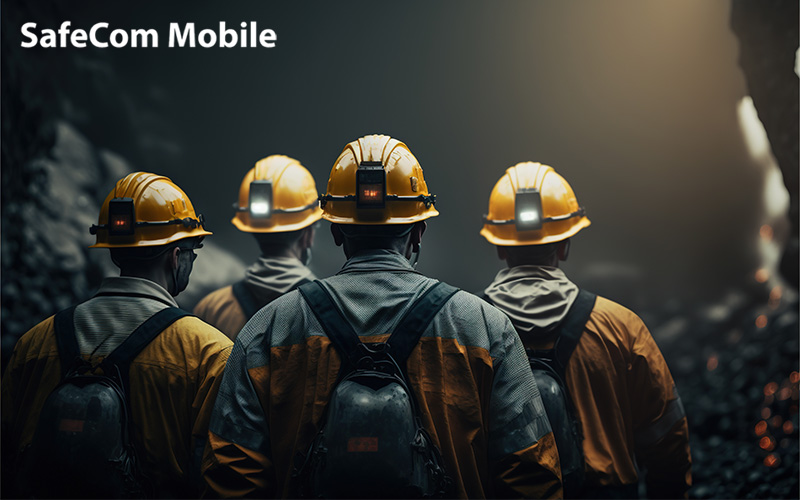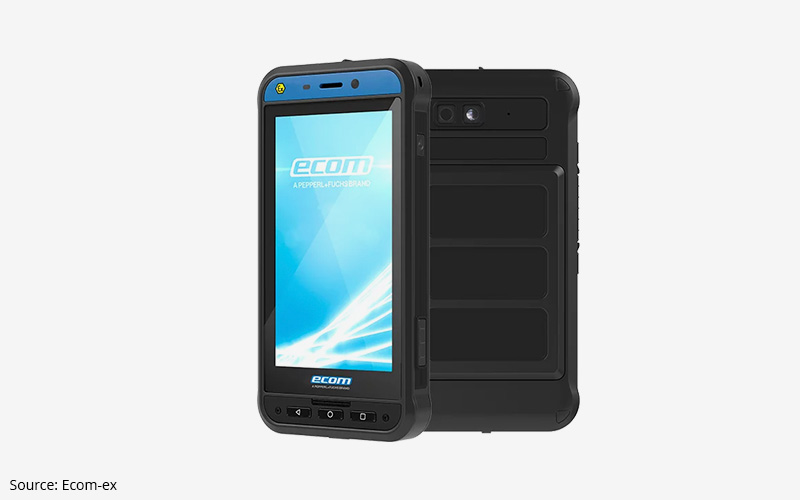
For industries that are regularly exposed to hazardous environments, the deployment of specialised devices like Zone 1 and Zone 2 phones becomes essential to facilitate uninterrupted communication and prioritise employee safety. These devices maintain efficient operations in demanding sectors, including but not limited to petrochemicals, mining, gas exploration and agriculture, creating a safe and secure workplace. In this blog, we’ll explore Zone 1 phones and Zone 2 phones, shedding light on their differences to empower businesses in making well-informed decisions.
1. Hazardous Area Classification
Hazardous area classification is crucial for ensuring the safety of personnel and equipment. It is a systematic approach used to categorise areas where sufficient quantities of flammable gases, vapours, liquids, combustible dust, or ignitable fibres may cause a fire or explosion. Zone 1 phones are specifically engineered to operate in environments with explosive gases or vapours. These may include chemical plants and oil refineries.
On the other hand, Zone 2 phones work best in surroundings where explosive gases are unlikely to occur in normal operation, but under abnormal conditions such as spillages or leakages.
2. Certification Requirements
Certification indicates the reliability of hazardous area phones. Zone 1 phones undergo rigorous testing and certification processes to meet international safety standards established by organisations: ATEX (Appareils destinés à être utilisés en ATmosphères EXplosibles) in Europe, and IECEx (International Electrotechnical Commission System for Certification to Standards Relating to Equipment for Use in Explosive Atmospheres) internationally. These standards define the requirements for electrical and mechanical equipment used in hazardous zones, guaranteeing the ability of devices like Ecom’s Smart-Ex® 02 DZ1 and DZ2 in preventing the risk of ignition in explosive atmospheres.

Zone 2 phones, while also certified, adhere to slightly less stringent standards. Due to the lower risk level of their intended environments, they are usually deployed in areas with possible presence of explosive gases.
3. Construction and Features
Zone 1 phones are designed with robust materials and advanced engineering to withstand extreme conditions. They feature reinforced casings, shatterproof screens, and additional layers of protection to guard against impact and environmental damage. Moreover, these phones come with extended battery life and powerful processors to support seamless communication even in critical situations.
Despite their durability, Zone 2 phones are built for surroundings with comparatively lower risks, hence their fortification level may be different from that of their Zone 1 counterparts. Constructed with sturdy materials, Zone 2 phones feature reinforced casings and rugged components to protect against damages.
4. Industry Applications
The choice between Zone 1 and Zone 2 phones depends on the specific industry and its associated risks. Zone 1 phones are indispensable in sectors like petrochemicals, mining, and gas exploration, where the presence of explosive gases is a constant threat. Their rugged design and high-level certifications make them a reliable choice for workers operating in these high-risk zones.
The application of Zone 2 phones, however, is more commonly seen in manufacturing, pharmaceuticals, and agriculture industries, where the likelihood of encountering explosive gas is lower. This also depends on how individual companies categorised their Zone 1 and Zone 2 areas, whether on what kind of industries the companies are in.
Understanding the differences between Zone 1 phones and Zone 2 phones helps businesses better select their ideal communication devices and allows them to align their choices with various requirements to ensure both safety and efficiency.
Safecom Mobile provides advanced computing and communication devices designed for harsh environments. Reach out to us now and learn how we can support your specific industrial needs.

